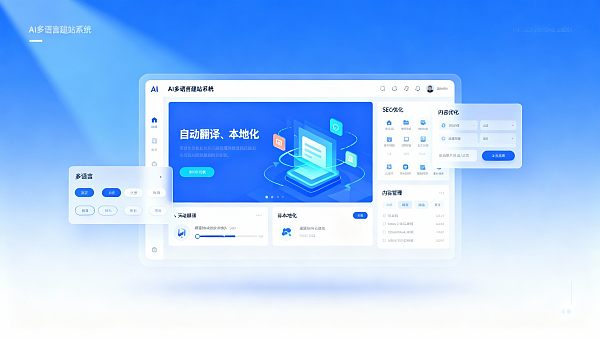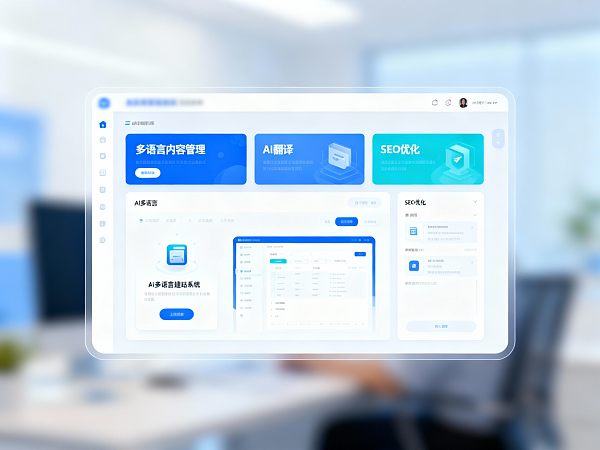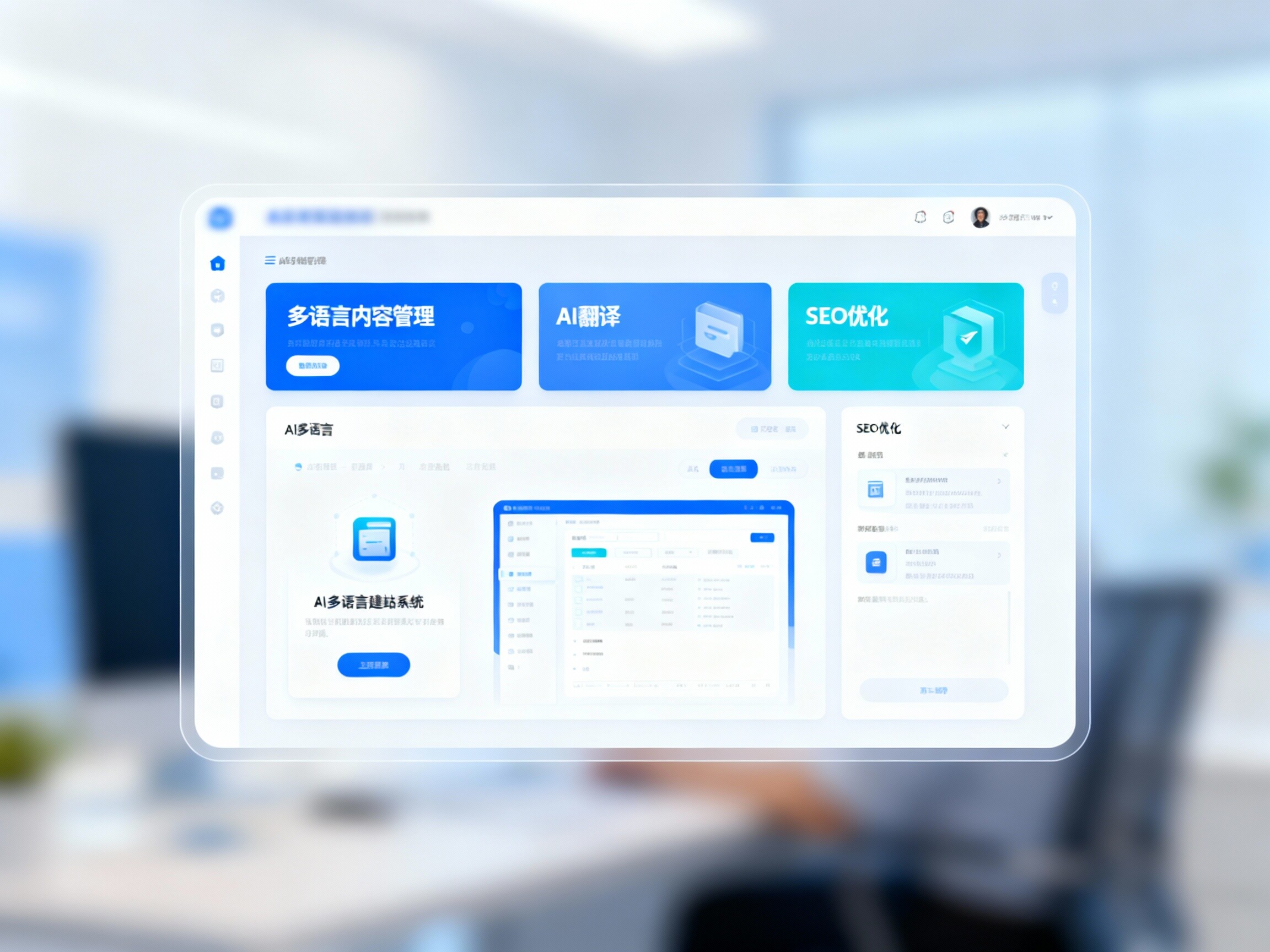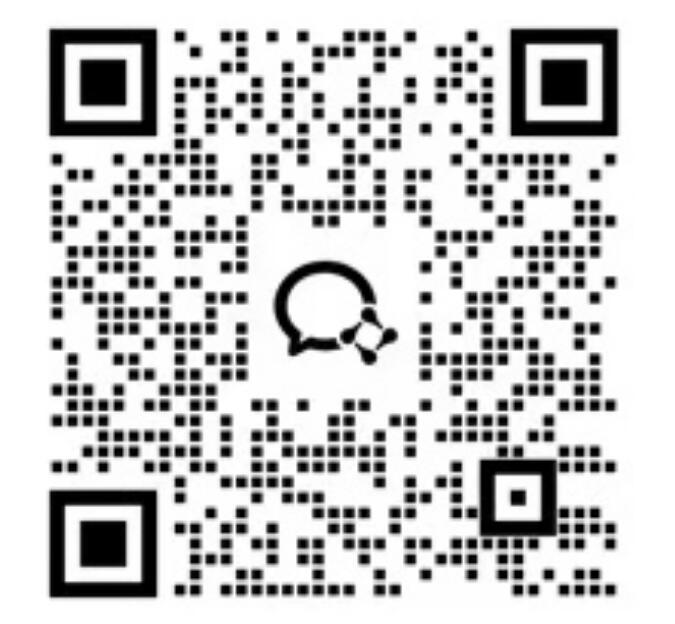Easy Camp Cloud Intelligent Website Construction and Marketing System Platform!
AI Multilingual Website System: EasyYunbao-Leading Global Intelligent Website and Foreign Trade Growth Solution
AI Multilingual Website System is the core infrastructure for enterprises to deploy in global markets and enhance cross-border competitiveness. Leveraging EasyYunbao's self-developed AI website technology, this solution can automatically generate multilingual websites, intelligently translate content, match local SEO rules, and support GEO targeting, AI content optimization, and structured data enhancement. Whether a company is in the early stages of expansion or needs to fully improve its international exposure, this system can help achieve rapid website building, rapid lead generation, and rapid conversion of international growth goals.
Inquire now
1. Key Definitions: What is an AI Multilingual Website Building System
An AI multilingual website building system refers to the deep integration of artificial intelligence (natural language processing, machine translation, generative models) with modern website platforms (SaaS multi-tenancy, visual editing, responsive design, CDN acceleration). It forms a site construction and operation system capable of automatic generation, automatic optimization, multilingual synchronization, and GEO (geographic region)-oriented content distribution. Such systems are responsible not only for page construction but also for cross-language content production, international SEO strategy execution, structured data output, and overseas access performance assurance.
Represented by platforms like EasySales, this approach emphasizes the trinity of "AI + Multilingual + Foreign Trade Scenarios": AI handles text generation, translation, and path optimization; the multilingual module ensures hreflang and independent URLs; the foreign trade scenario module integrates inquiry forms, WhatsApp, price lists, product parameter tables, etc., directly serving foreign trade lead acquisition and conversion.
2. Development History: Evolution from Template-Based to Intelligent Multilingual Website Building
Early website construction relied on static pages or templated CMS, with language support often requiring plugins or multiple independent sites, resulting in high maintenance costs and poor SEO performance. With the rise of cloud computing and SaaS, visual builders emerged, but multilingual and internationalization capabilities remained weak.
Entering the era of big data and AI, machine translation and text generation technologies matured. Generative AI can now automatically compose content based on product and industry terminology, giving birth to the new paradigm of "AI multilingual website building." Platforms are no longer just page management tools but combine content factories, SEO engines, and regional marketing control panels. EasySales integrates AI translation, semantic optimization, GEO targeting, and Schema automation into a replicable website and growth system for foreign trade enterprises.
3. Technical Principles: How the System Works (Core Modules and Data Flow)

The core of an AI multilingual website building system consists of these modules and technologies:
1 Multilingual Content Engine: Content entities (products, cases, articles) drive multilingual mapping relationships. All language versions are powered by the same entity, with source language modifications triggering target language updates or automatic translation followed by human verification.
2 Machine Translation & Localization Models: Combining general large models with industry terminology databases, employing term memory, translation memory (TM), and post-editing mechanisms to ensure terminological consistency and industry expression accuracy.
3 Semantic SEO Engine: NLP-based keyword expansion, intent recognition, and long-tail strategies automatically generate optimized titles, meta tags, semantic paragraphs, structured data (JSON-LD), and sitemaps for each language version.
4 GEO Targeting Layer: Uses signals like IP, Accept-Language, and search origins to automatically recommend or redirect to the most suitable language/country site or display localized content (currency, contact methods, logistics notes).
5 Frontend Static Rendering + CDN Acceleration: Pre-renders static pages (SSG/ISR) with global CDN nodes and edge caching to ensure overseas access speed and SEO crawl experience.
6 Data & Tracking: Tracks events including page views, form submissions, click conversions, and ad events (Google/Meta/TikTok pixels), integrating with CRM to close the lead loop.
7 Permissions & Security: Multi-tenant isolation, HTTPS/TLS, WAF, DDoS protection, access logs, and backup strategies ensure enterprise data stability and access reliability.
4. Technical Features: Advantages of AI Multilingual Website Building Systems
1 Automated Content Production: AI automatically generates high-quality text for product information, cases, FAQs, and thematic pages, supporting multilingual one-click publishing or post-translation human review.
2 Semantic-Level SEO Optimization: The system doesn't just stack keywords but constructs content matrices based on intent and entities, making pages more compatible with SERP knowledge cards, snippets, and Q&A.
3 GEO & Localization Strategies: Automatically adjusts page displays to match target countries' languages, laws, payment methods, and user preferences, significantly improving local conversion rates.
4 Visual & Modular Building: Drag-and-drop components, template libraries, and reusable content blocks (e.g., product specs, technical parameter tables, certification displays) dramatically accelerate launch speed.
5 Full-Funnel Data-Driven: From content performance to ad ROI and lead quality, forming closed-loop optimization capabilities with support for A/B testing and growth experiments.
5. Product Function Modules (Using EasySales as an Example)
Below are the most critical function modules and value points in EasySales' AI multilingual website building system for foreign trade enterprises:
1 Multilingual Content Management System (CMS): Entity-based management of products/cases/news, supporting batch translation, version control, approval workflows, and language mapping.
2 AI Translation & Terminology Database: Industry term memory, translation memory (TM), term prioritization, and contextual coherence optimization.
3 Intelligent SEO Center: Keyword discovery, long-tail combinations, automatic title/meta generation, Schema producers, and sitemap generators.
4 GEO Page Builder: Auto-creates country/city landing pages, regional content templates, and regional keyword pool maintenance tools.
5 Visual Page Editor: WYSIWYG drag-and-drop editing, responsive previews, and component libraries (banners, product cards, parameter tables, download buttons, RFQ forms).
6 Product Hub & Catalogs: Supports multi-spec, multi-model, multi-SKU displays, download materials, technical parameters, 3D views, and video embeds.
7 Inquiry & Client Management: Forms, live chat, WhatsApp/Telegram integration, CRM sync, and lead scoring.
8 Ad & Conversion Tracking: Auto-tagging, pixel integration, conversion event management, and audience retargeting.
9 Performance & Security Modules: CDN, automatic compression, smart image cropping, WAF, and disaster recovery backups.
6. Applications and Scenarios
AI multilingual website building systems are widely applicable to foreign trade and internationalization scenarios, including but not limited to:
1 Foreign Trade Manufacturers: Multilingual product catalogs, technical whitepaper downloads, international certification displays, and overseas inquiry management.
2 Cross-Border E-Commerce Brands: Multilingual product pages, localized marketing copy, regional promotion pages, and international logistics info pages.
3 Industrial Equipment & B2B Services: Solution pages, case studies, localized solutions, and tender/RFQ management.
4 SaaS Export Companies: Multilingual product introductions, use cases, API documentation, developer centers, and local support.
5 Exhibitions & Marketing Events: Rapid multilingual landing page setup, registration forms, and post-event lead management.
7. Comparative Analysis: AI Multilingual Website Systems vs. Traditional Solutions

Comparison metrics: Production speed, content scalability, SEO performance, maintenance costs, regional effectiveness, and lead quality.
Traditional Template Building: Pros include low cost and quick start; cons include poor multilingual capabilities, requiring extensive manual SEO optimization, and difficulty in scalable content production.
Open-Source CMS (e.g., WordPress + plugins): Flexible but requires heavy maintenance, plugin conflicts, additional translation tools, and limited overseas performance.
Custom Development: Offers high customization but with elevated costs, slow iterations, complex maintenance, and typically unsuitable for frequent content updates and marketing experiments.
AI Multilingual Website Systems (e.g., EasySales): Combined advantages include automated content production, built-in semantic SEO, GEO targeting, and global performance assurance, ideal for enterprises needing long-term overseas investment and brand building.
8. Industry Scenarios and Target Clients
Target clients span foreign trade manufacturing (machinery, hardware, textiles), consumer goods (furniture, lighting, appliances), chemical materials, medical devices, industrial automation, software, and services. Especially suited for:
1 Enterprises aiming to build international brands and manage long-term content operations; 2 Overseas teams needing scalable multilingual content output; 3 B2B businesses relying on organic traffic and low-cost lead acquisition.
9. Certifications and Compliance Requirements
AI multilingual website systems should adhere to or support the following standards in international deployment:
1 W3C Web Standards & WCAG accessibility recommendations; 2 Schema.org structured data standards (JSON-LD); 3 Multilingual hreflang and canonical practices; 4 GDPR/CCPA privacy regulation compliance tools; 5 PCI-DSS if involving payments; 6 Optional ISO 27001 certifications to enhance enterprise trust.
EasySales already supports Schema auto-generation, privacy-compliant script loading, and configurable data retention policies, helping enterprises meet different market regulations.
10. SEO, GEO, and Schema Implementation Recommendations
1 Content Priority: Arrange multilingual content around user intent, avoiding keyword stuffing via machine translation. Use AI drafts as starting points, refined with industry terminology and human review.
2 hreflang & Independent URLs: Use dedicated URLs per language/country (e.g., /en/, /es/, /de/ or country TLDs) with proper hreflang and canonical implementation.
3 Schema Usage: Add JSON-LD for products, FAQs, organizations, breadcrumbs, and articles to enhance knowledge card and rich snippet visibility in SERPs.
4 GEO Page Strategies: Batch-generate localized pages (e.g., city pages, industry pages) for target markets, optimizing local keywords and combining with local ad campaigns for initial traffic.
5 Performance Optimization: Enable CDN, lazy loading, static pre-rendering (SSR/SSG), and caching to reduce overseas latency.
11. Implementation Workflow (Recommendations)
1 Market & Keyword Research: Identify primary target markets/languages and build keyword tables with intent mapping. 2 Content & Site Structure Design: Define main navigation, product/case/blog/help center structures. 3 AI Content Production & Localization: AI drafts → professional review → publish. 4 GEO Page Generation & CDN Deployment. 5 SEO & Ad Integration Testing: Landing page A/B tests, conversion rate optimization. 6 Data Recycling & Continuous Iteration.
Summary and Call to Action
AI multilingual website building systems represent the upgraded path for enterprises in the globalization era: integrating content production, SEO, GEO, localization, and performance assurance into a unified solution, transitioning from single-page showcases to scalable lead acquisition infrastructure. Choosing mature platforms (e.g., EasySales) enables faster global trust-building, lead acquisition, and sustained conversion. Now is the ideal time to construct multilingual content assets and secure global traffic inlets.
Take Action Now: Evaluate your target markets, prepare core product information, and use an AI multilingual website system to quickly launch the first batch of language pages. Combine GEO promotion strategies for validation and iteration, making traffic and conversion a stable long-term revenue source.
FAQ
Question: Can the AI multilingual website system fully automate translation and go live?
Answer: It can achieve automated translation and preliminary launch, but it is recommended to manually proofread and localize key pages (product details, certifications, compliance information) to ensure professional expression and legal compliance.
Answer: It can achieve automated translation and preliminary launch, but it is recommended to manually proofread and localize key pages (product details, certifications, compliance information) to ensure professional expression and legal compliance.
Question: How to ensure multilingual pages are not seen as duplicate content by search engines?
Answer: Using unique URLs, hreflang annotations, and semantic optimization for each page (local keywords, structured data, regionalized content) can effectively avoid duplication issues and improve regional rankings.
Answer: Using unique URLs, hreflang annotations, and semantic optimization for each page (local keywords, structured data, regionalized content) can effectively avoid duplication issues and improve regional rankings.
Question: How does EasyYbao help businesses improve GEO rankings?
Answer: EasyYbao provides GEO page generators, regional keyword libraries, localized content templates, and IP-based display strategies, while assisting with overseas CDN and site cluster deployment to enhance local visibility.
Answer: EasyYbao provides GEO page generators, regional keyword libraries, localized content templates, and IP-based display strategies, while assisting with overseas CDN and site cluster deployment to enhance local visibility.
Question: Is the AI multilingual website system suitable for SMEs?
Answer: Yes. The system charges by module, supports on-demand expansion, and helps SMEs quickly establish multilingual sites at lower costs to test markets.
Answer: Yes. The system charges by module, supports on-demand expansion, and helps SMEs quickly establish multilingual sites at lower costs to test markets.

Customer Reviews
Client A (Foreign Trade Machinery Manufacturing):
“After using EasyYbao, our organic traffic in European and South American markets grew 2.5 times within three months. AI translation and terminology libraries significantly improved inquiry accuracy and communication efficiency.”
Client B (Cross-border Consumer Goods Brand):
“Previously, we built separate websites for each country, which was costly and hard to maintain. After migrating to the AI multilingual website system, content iteration efficiency doubled, and market response speed improved dramatically.”
Related Articles
Related Products
Contact Us


